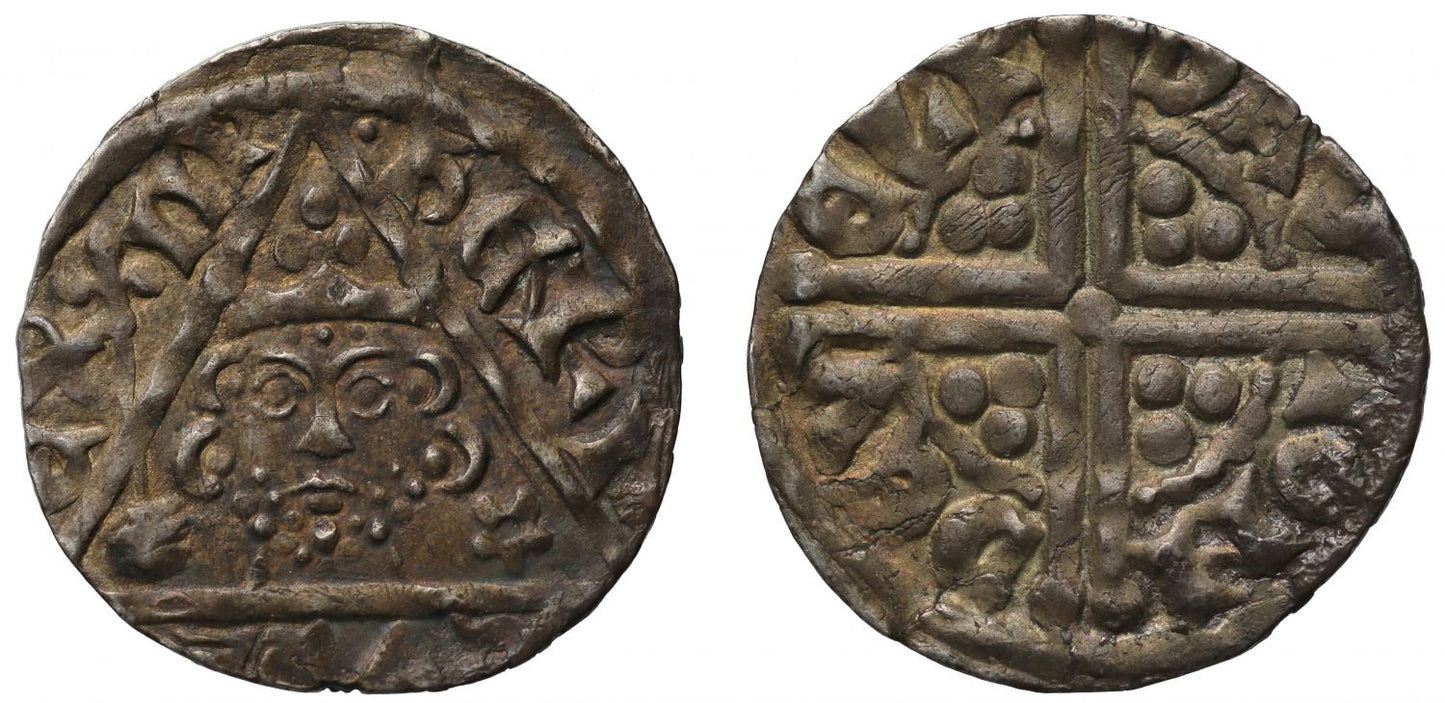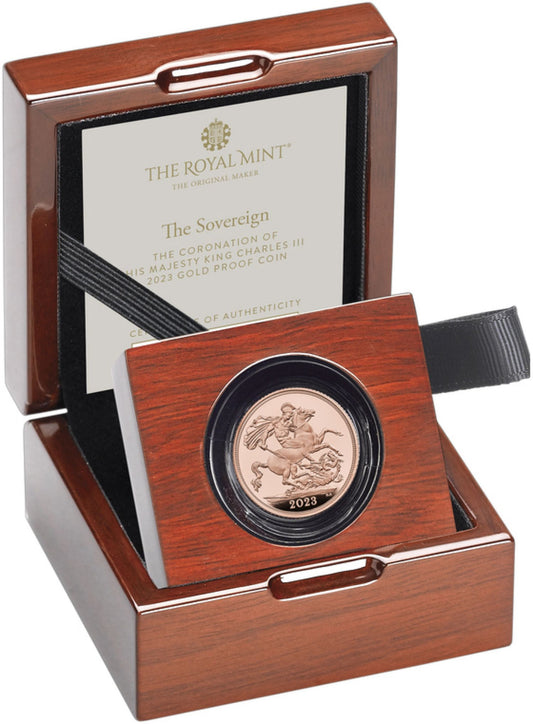FAQs
What makes a coin valuable?
I have coins to sell, what’s the next step?
How will my purchases be shipped?
What happens if I’m not entirely happy with my purchase?
Ireland, Henry III Long cross Penny, type IIa, Dublin Mint, Moneyer Davi
Ireland, Henry III (1216-72), silver Penny, (1251-54), Dublin Mint, moneyer Davi, type IIa, cruder crowned head within triangle, holding sceptre beyond to left, pierced cinquefoil to right, legend surrounding, .hEnRI CVS R EX III, rev. pellet at centre of voided cross pommée, tri-pellets in each angle, beaded circles and legend surrounding, DAV I ON DEV EL+, weight 1.42g (DF 57; S.6240). Toned, good very fine.
The Latin legends translate as on the obverse "King Henry the Third" and on the reverse as "David of Dublin."
In an effort to curtail clipping of the edges if coins, Henry III was the first to introduce a coinage where the reverse cross extended to towards the rim of the coin so any tampering of the edge would be more obvious to the casual observer. The new design having a voided cross pommée with groups of three pellets in each inner angle. The coinage running for a 32 year period from 1247 until 1279 in the reign of Edward I.
Nine year old Henry who was born on 1st October 1207 succeeded his Father under the protection of William Marshall on 28th October 1216 with a coronation at Gloucester Cathedral and who reintroduced the terms of the Magna Carta from 1217, after quelling the Baron's rebellion at the battles of Lincoln and Sandwich, under which all future government was based.
At age 18 in 1225 Henry agreed to abide by the Great Charter which was a later version of the Magna Carta limiting Royal power and protecting the barons. Henry was also Lord of Ireland and Duke of Aquitaine and attempted to regain lands in France in 1230 to no avail. A revolt in 1232 by Richard Marshall the son of William was ended by a peace settlement with interaction from the church. Henry preferred to home rule and married Eleanor of Provence in 1236 with whom he had five children, the eldest being the future King Edward I. He was known for piety and charity and adopted Edward the Confessor as his patron saint. He did try invading Poitou in 1242 but suffered defeat at the Battle of Taillebourg and by 1258 his rule at home was becoming unpopular over foreign policy and taxes. A coalition of barons seized power expelling Henry's Poitevin half-brothers and reforming government with the Provisions of Oxford. Henry with the baronial government enacted peace with France in 1259 giving up lands in France in exchange for Louis IX recognising him as ruler of Gascony, but instability later continued. In 1263 the baron Simon De Montfort seized power resulting in a second Baron's War with Henry receiving support from Louis and culminating in the Battle of Lewes in 1264 where Henry was defeated and taken prisoner. Henry's sone Prince Edward came to the rescue by defeating De Montfort killing him at the Battle of Evesham in 1265 and freed King Henry. Henry wanted to exact revenge on the rebels but was persuaded by the church through the Dictum of Kenilworth of 31st October 1266 to take a less harder line and reconcile. Henry died after recurring illness on 16th November 1272 after the longest Medieval reign in English history and is buried in Westminster Abbey.
The Hiberno Norse settlement of Dublin was founded by the Vikings on the banks of the RiverLiffey around 841 with the name literally meaning "the Black Pool" and was an early fortification with ditch, earth rampart and palisade. Stone walls were later constructed in the 11th Century and a man made hill on which to have important political meetings. The Danes slowly converted to Christianity and the first Bishop of Dublin was appointed in 1028 and Christchurch Cathedral began construction. The town was sacked several times over the years in battles between the Irish and Viking Danes but the settlement grew to be the biggest and most important in Ireland and trade links were strong with Chester and Bristol. The wooden Norman style fort was replaced by a stone castle in the early 13th Century and gained its first mayor in 1229. The four so-called "obedient shires" at this time were the Eastern counties of Meath, Louth, Kildare and Dublin and a boundary line known as the pale, marked the land as the King's perimeter and the people within received a degree of protection from the crown; whereas those beyond it were subject to more savage laws of the Irish and perhaps harsher living standards, through time evolving the colloquial phrase "beyond the pale". Dublin continues as a strong capital city to this day.
Provenance:
Ex Mark Freehill Collection, Noble Numismatics, Auction 122, 19-21st November 2019, lot 2864 part.
Ex Collection of an English Doctor part III, Sovereign Rarities fixed price list online August 2022.
FAQs
What makes a coin valuable?
I have coins to sell, what’s the next step?
How will my purchases be shipped?
What happens if I’m not entirely happy with my purchase?













